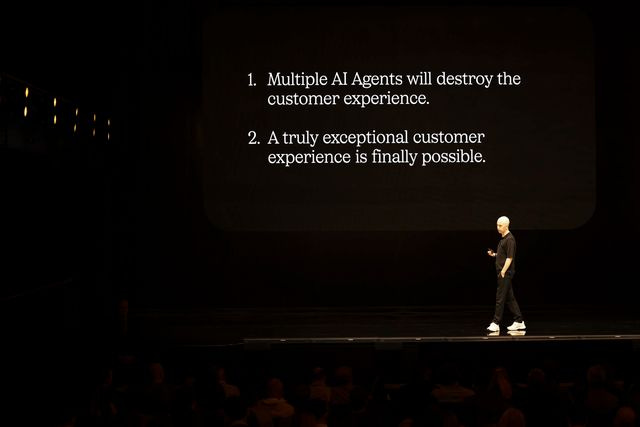The rise of the Customer Agent
The next phase of Intercom's vision is taking shape
This is a version of a talk by Intercom CEO Eoghan McCabe from last week’s Pioneer AI summit.
With Fin 3, we feel we’ve achieved the aspirational goal we set out with: to create a service agent that could handle essentially all of customer service.
It can now manage the majority of your queries, including the very sticky, complex ones, across all the channels your customers use—voice, Slack, you name it. And it does so with a level of effectiveness unlike anything else, especially now that it runs on our proprietary models.
But of course, we’re not going to stop there. Two years is a long time in AI, and we’re just getting started. The next part of our vision is already taking shape, and it’s being led by where our customers are taking Fin.
We’re seeing our most pioneering customers use Fin’s flexibility to do things far beyond traditional service. Lightspeed is using it across their entire customer journey. Anthropic is planning to use it to create a more seamless lifecycle experience. (You can find out more about how they’re using Fin here).
WHOOP, the wearables company, has done something really interesting. Facing a massive product launch, they needed a solution they could set up quickly to handle an expected 20x increase in sales chats. They left Fin on overnight for the first time and woke up to find it having conversations and making sales, all on its own. Today, Fin resolves 84% of their sales conversations, and they’ve seen a 130% increase in sales attributed to their inside sales team since implementing it.
These examples showed us two things.
The first is a huge trap we need to avoid. As every team—sales, success, marketing, service—rushes to adopt AI, I worry about the customer experience. If you play this out, you create a discombobulated mess of competing agents, all with different priorities, different knowledge, and operating on different channels.
It’s a world where the customer is caught in the middle. I’m convinced this approach is dead on arrival.
But the flip side of this risk is an incredible opportunity. It’s a chance to finally deliver a level of seamlessness that was never practical in the human-powered world.
We all know the standard experience: you get passed from a sales rep to an onboarding specialist to a support agent. Each handoff creates friction. No single person can be an expert at everything, so we build silos. But an AI agent can be. As we’ve seen, it’s clearly capable of handling use cases across the entire customer lifecycle.
This opens the door to previously unimaginable customer experiences.
This is where we’re going next
Our intention is to take this far further. Fin will be not just the world’s best service agent, but the world’s best Customer Agent. Service will always be core to what Fin does—it’s the bulk of the work and will continue to get the majority of our R&D resources.
But Fin also needs to get great at holding a customer’s hand from the very first time they consider your product, through purchase, onboarding, and beyond. From here, you’ll see Fin move from being a task-based agent to truly an agentic agent—not just tailoring responses, but making decisions about how to best guide a customer through your business.
To make this a reality, we’re building significant new capabilities.
Fin will have roles beyond just service.
It will have prioritized goals and decide which one to pursue in any given moment.
It will have memory, learning from every interaction over a customer’s entire lifecycle.
It will have deep knowledge of your entire business—every plan, policy, and product.
And it will interoperate with all the systems that matter, from service to sales and marketing.
We’re already heads down building this. Here are two examples.
Fin the shopping assistant
In our labs, we have a shopping assistant for an outdoor gear site. A customer asks for a jacket for a trip to Iceland. Even though nothing in the database is tagged with “Iceland,” Fin uses its reasoning to figure out the climate and recommends appropriate gear, even offering to add it to the cart. Then, like any good salesperson, it sees an opportunity and suggests an upsell.
Fin the sales rep
In another example, we have Fin acting as an SDR on our own site, fin.ai. It doesn’t just run through a robotic checklist of questions. It has a natural conversation, skillfully weaving in the questions it needs to ask to qualify the lead, and then packages up a summary for the sales team. This is real technology, and it’s already working.
Support leaders = the new AI leaders
It’s atypical for us to share what we’re working on this early. We’re a product-first company and usually only talk about things that are fully baked. But we’re opening up because the Customer Agent category is coming, and we want our existing customers — customer service leaders — to be in position to be the next expert leaders in their business, guiding their peers in sales and marketing. And selfishly, when their execs come to them for advice, we want them to be able to say that Fin is the excellent Customer Agent that can help them.
We’re following where our customers are going, and we can equip them to lead from the front.


